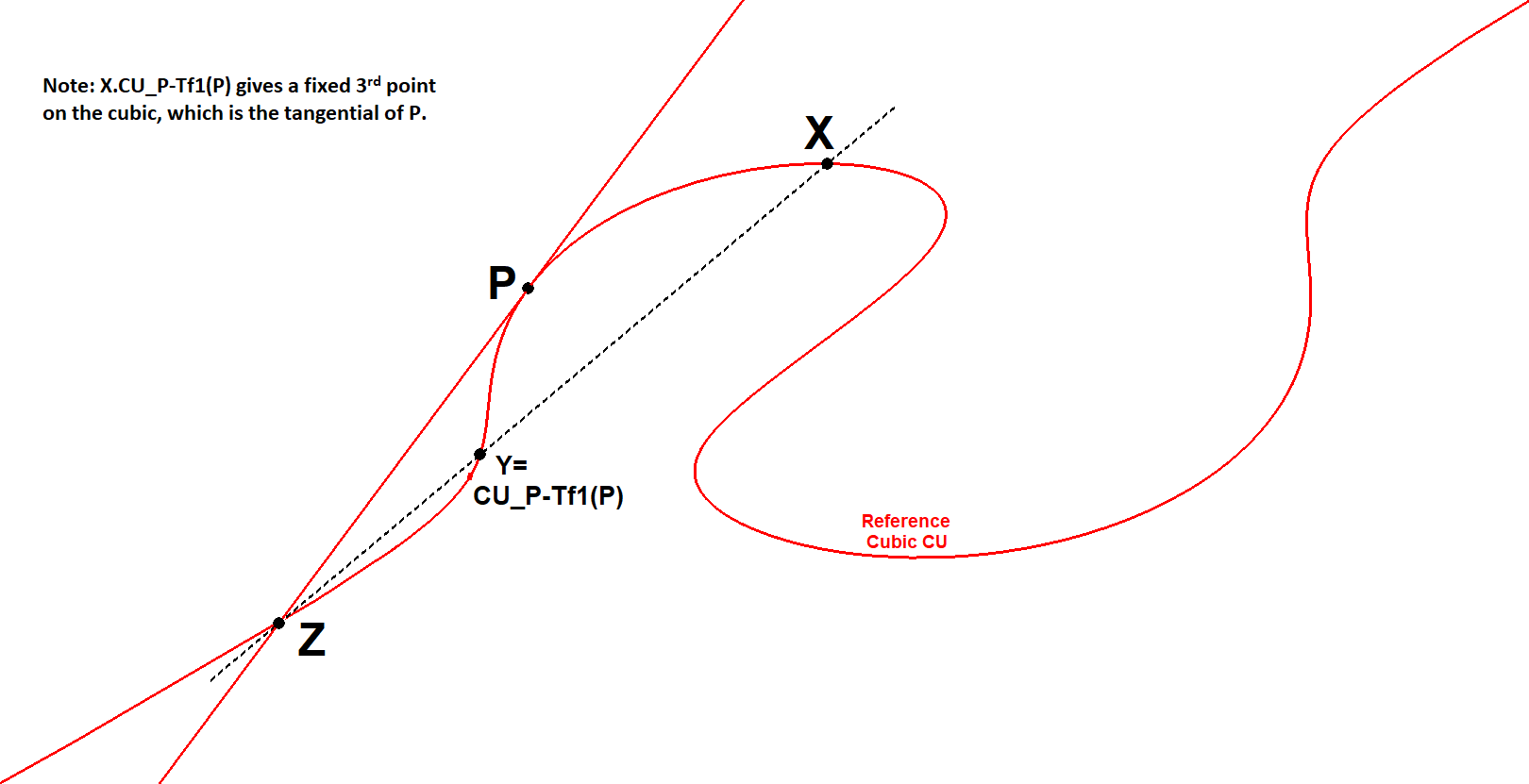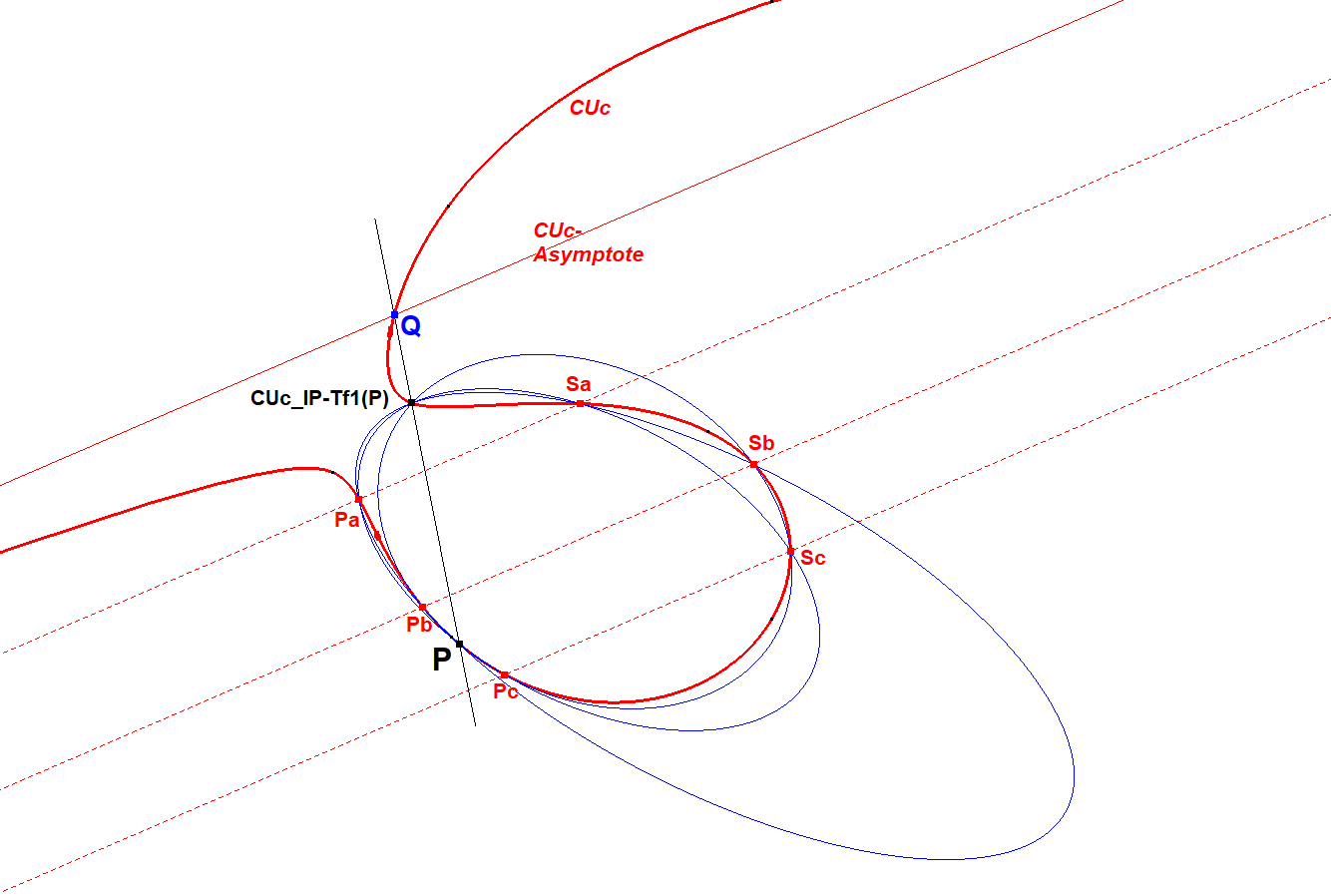CU-P-Tf2 1st CU-P Transformation
Given a Reference Cubic CU and a random reference point P on the cubic.
- Let X, Pa, Pb, Pc be four random points on CU.
- Let Sa, Sb, Sc be the 3rd intersection points of CU and resp. PPa, PPb, PPc.
- Construct conics (X, Pa, Sa, Pb, Sb), (X, Pa, Sa, Pc, Sc), (X, Pb, Sb, Pc, Sc). These conics will be shown to concur in a common cubic point Y=CU-P-Tf2(X), which is independent of Pa, Pb, Pc.

CU Point Validation
- Lines: P+Pa+Sa=N, P+Pb+Sb=N, P+Pc+Sc=N
- Conic: X+Pa+Sa+Pb+Sb+Y=2N –> X+Pa+(N-P-Pa)+Pb+(N-P-Pb)+Y=X+2N-2P+Y=2N –> Y=2P-X
This validation shows that transformation point Y is a point on CU independent of Pa,Pb,Pc,Sa,Sb,Sc.
Properties
- Let Z be 3rd intersection point of the CU-cubic with line XY: Z+X+Y=N.
- Subsititute Y=2P-X Z+X+2P-X=N Z+2P=N, which shows that the 3 points Z,P,P are collinear and therefore Z is the tangential of P.

Construction of P-tangent and P-tangential
- This gives a construction method for the tangent at some point P1 to the cubic as well as the tangential of that point P0 on the cubic.
- Let P be some point on the cubic for which we want to construct the tangent.
- Let X, Pa, Pb, Pc be four random points on the cubic.
- Let Sa,Sb,Sc be the 3rd intersection points of PPa,PPb,PPc with the cubic.
- Let Y be the 4th intersection point of the conics (X,Pa,Sa,Pb,Sb) and (X,Pa,Sa,Pc,Sc).
- Let Z be the 3rd intersection point of XY with the cubic.
- Z will be the tangential of P0 wrt the cubic and PZ will be the tangent at P to the cubic.
Another Property
- When the cubic is cicular and the fixed point is IP (infinity Point), then CU-P-Tf1(P)=Q=intersection point of asymptote with CUc. This offers a method to contruct Q, the intersection point of the CUc-asymptote with CUc.

Estimated human page views: 6
